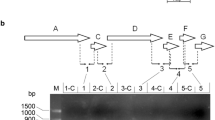Abstract
Extremely alkalophilic bacteria that grow optimally at pH 10.5 and above are generally aerobic bacilli that grow at mesophilic temperatures and moderate salt levels. The adaptations to alkalophily in these organisms may be distinguished from responses to combined challenges of high pH together with other stresses such as salinity or anaerobiosis. These alkalophiles all possess a simple and physiologically crucial Na+ cycle that accomplishes the key task of pH homeostasis. An electrogenic, secondary Na+/H+ antiporter is energized by the electrochemical proton gradient formed by the proton-pumping respiratory chain. The antiporter facilitates maintenance of a pHin that is two or more pH units lower than pHout at optimal pH values for growth. It also largely converts the initial electrochemical proton gradient formed by respiration into an electrochemical sodium gradient that energizes motility as well as a plethora of Na+/solute symporters. These symporters catalyze solute accumulation and, importantly, reentry of Na+. The extreme nonmarine alkalophiles exhibit no primary sodium pumping dependent upon either respiration or ATP. ATP synthesis is not part of their Na+ cycle. Rather, the specific details of oxidative phosphorylation in these organisms are an interesting analogue of the same process in mitochondria, and may utilize some common features to optimize energy transduction.
Similar content being viewed by others
References
Bassalina, M., Damiano, E., and LeBlanc, G. (1984).Biochemistry 23, 1015–1022.
Clejan, S., and Krulwich, T. A. (1988).Biochim. Biophys. Acta 946, 40–48.
Clejan, S., Krulwich, T. A., Mondrus, K. R., and Seto-Young, D. (1986).J. Bacteriol. 168, 334–340.
Dibrov, P. A., Lazarova, R. L., Skulachev, V. P., and Verkhovskaya, M. L. (1986).Biochim. Biophys. Acta 850, 458–465.
Ferguson, S. J. (1985).Biochim. Biophys. Acta 811, 47–95.
Garcia, M. L., Guffanti, A. A., and Krulwich, T. A. (1983).J. Bacteriol. 156, 1151–1157.
Guffanti, A. A. (1983).FEMS Microbiol. Lett. 17, 307–310.
Guffanti, A. A., and Krulwich, T. A. (1988).J. Biol. Chem. 263, 14748–14752.
Guffanti, A. A., Susman, P., Blanco, R., and Krulwich, T. A. (1978).J. Biol. Chem. 253, 708–715.
Guffanti, A. A., Blanco, R., and Krulwich, T. A. (1979).J. Biol. Chem. 254, 1033–1037.
Guffanti, A. A., Bornstein, R. F., and Krulwich, T. A. (1981).Biochim. Biophys. Acta 635, 619–630.
Guffanti, A. A., Fuchs, R. T., Schneier, M., Chiu, E., and Krulwich, T. A. (1984).J. Biol. Chem. 259, 2971–2975.
Guffanti, A. A., Chiu, E., and Krulwich, T. A. (1985).Arch. Biochem. Biophys. 239, 327–333.
Guffanti, A. A., Finkelthal, O., Hicks, D. B., Falk, L., Sidhu, A., Garro, A., and Krulwich, T. A. (1986).J. Bacteriol. 167, 766–773.
Hackenbrock, C. R., Chazotte, B., and Gupte, S. S. (1986).J. Bioenerg. Biomembr. 18, 331–368.
Hicks, D. B., and Krulwich, T. A. (1986).J. Biol. Chem. 261, 12896–12902.
Hirota, N., and Imae, Y. (1983).J. Biol. Chem. 258, 10577–10581.
Hirota, N., Kitada, M., and Imae, Y. (1981).FEBS Lett. 132, 278–280.
Ken-Dror, S., Preger, R., and Avi-Dor, Y. (1986).Arch. Biochem. Biophys. 244, 122–127.
Kitada, M., and Horikoshi, K. (1977).J. Bacteriol. 131, 784–788.
Kitada, M., and Krulwich, T. A. (1984).J. Bacteriol. 158, 963–967.
Kitada, M., Guffanti, A. A., and Krulwich, T. A. (1982).J. Bacteriol. 152, 1096–1104.
Kitada, M., Lewis, R. J., and Krulwich, T. A. (1983).J. Bacteriol. 154, 330–335.
Koga, Y., Nishihara, M., and Morii, O. (1982).J. Univ. Occup. Health 4, 227–240.
Koyama, N., Kiyomiya, A., and Nosoh, Y. (1976).FEBS Lett. 72, 77–78.
Koyama, N., Koshiya, K., and Nosoh, Y. (1980).Arch. Biochem. Biophys. 199, 103–109.
Koyama, N., Ishikawa, Y., and Nosoh, Y. (1986).FEMS Microbiol. Lett. 34, 195–198.
Koyama, N., Wakabayashi, K., and Nosoh, Y. (1987).Biochim. Biophys. Acta 898, 293–298.
Krulwich, T. A., and Guffanti, A. A. (1989).Annu. Rev. Microbiol. 43, 435–463.
Krulwich, T. A., Guffanti, A. A., Bornstein, R. F., and Hoffstein, J. (1982).J. Biol. Chem. 257, 1885–1889.
Krulwich, T. A., Federbush, J. G., and Guffanti, A. A. (1984).J. Biol. Chem. 260, 4055–4058.
Krulwich, T. A., Agus, R., Schneier, M., and Guffanti, A. A. (1985).J. Bacteriol. 162, 768–772.
Krulwich, T. A., Guffanti, A. A., Fong, M. Y., Falk, L., and Hicks, D. B. (1986).J. Bacteriol. 165, 884–889.
Krulwich, T. A., Hicks, D. B., Seto-Young, D., and Guffanti, A. A. (1988).CRC Crit. Rev. Microbiol. 16, 15–36.
Lancaster, J. R., Jr. (1988). InAdvances in Membrane Biochemistry and Bioenergetics (Kim, C. H., Tedeschi, H., Diwan, J. J., and Salerno, J. C., eds.), Plenum Press, New York, pp. 363–387.
Laubinger, W., and Dimroth, P. (1987).Eur. J. Biochem. 168, 475–480.
Laubinger, W., and Dimroth, P. (1988).Biochemistry 27, 7531–7537.
Lewis, R. J., Belkina, S., and Krulwich, T. A. (1980).Biochem. Biophys. Res. Commun. 95, 857–863.
Lewis, R. J., Prince, R., Dutton, P. L., Knaff, D., and Krulwich, T. A. (1981).J. Biol. Chem. 256, 10543–10549.
Lewis, R. J., Krulwich, T. A., Reynafarje, B., and Lehninger, A. L. (1983).J. Biol. Chem. 258, 2109–2111.
Mandel, K. G., Guffanti, A. A., and Krulwich, T. A. (1980).J. Biol. Chem. 255, 7391–7396.
Matsukura, H., and Imae, Y. (1987).Biochim. Biophys. Acta 904, 301–308.
McLaggan, D., Selwyn, M. J., and Dawson, A. P. (1984).FEBS Lett. 165, 254–258.
Rottenberg, H. (1985).Mod. Cell. Biol. 4, 47–83.
Rottenberg, H. (1988).Eur. Bioenerg. Conf. 5, 9.
Seto-Young, D., Garcia, M. L., and Krulwich, T. A. (1985).J. Biol. Chem. 260, 11393–11395.
Sugiyama, S., Matsukura, H., and Imae, Y. (1985).FEBS Lett. 182, 265–268.
Sugiyama, S., Matsukura, H., Koyama, N., Nosoh, Y., and Imae, Y. (1986).Biochim. Biophys. Acta 852, 38–45.
Sugiyama, S., Cragoe, E. J., Jr., and Imae, Y. (1988).J. Biol. Chem. 263, 8215–8219.
Tokuda, H., and Unemoto, T. (1982).J. Biol. Chem. 257, 10007–10014.
Tokuda, H., and Unemoto, T. (1984).J. Biol. Chem. 259, 7785–7790.
Tokuda, H., Asano, M., Shimamura, Y., Unemoto, T., Sugiyama, S., and Imae, Y. (1988).J. Biochem. 103, 650–655.
Westerhoff, H., Melandri, B. A., Venturoli, G., Azzone, G. F., and Kell, D. B. (1984).Biochim. Biophys. Acta 768, 257–292.
Author information
Authors and Affiliations
Rights and permissions
About this article
Cite this article
Krulwich, T.A., Guffanti, A.A. The Na+ cycle of extreme alkalophiles: A secondary Na+/H+ antiporter and Na+/solute symporters. J Bioenerg Biomembr 21, 663–677 (1989). https://doi.org/10.1007/BF00762685
Received:
Revised:
Issue Date:
DOI: https://doi.org/10.1007/BF00762685




